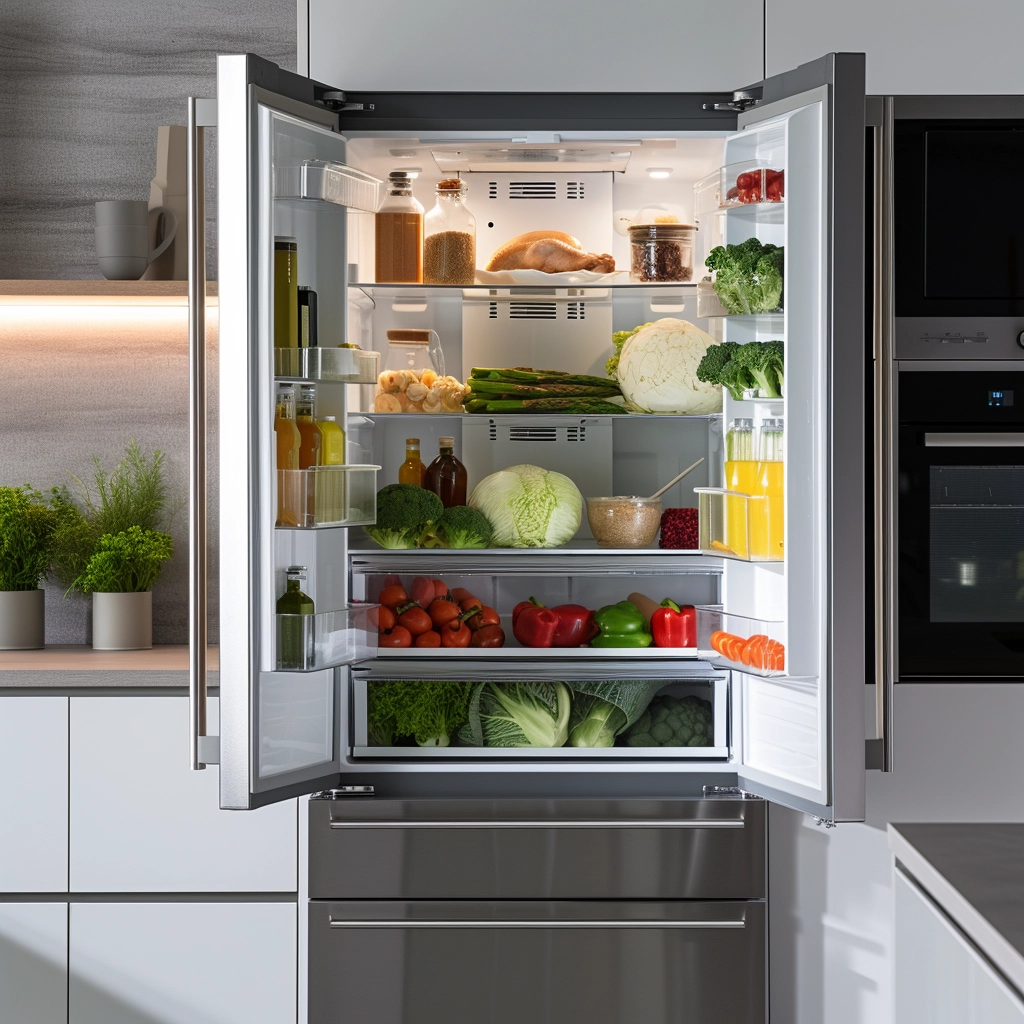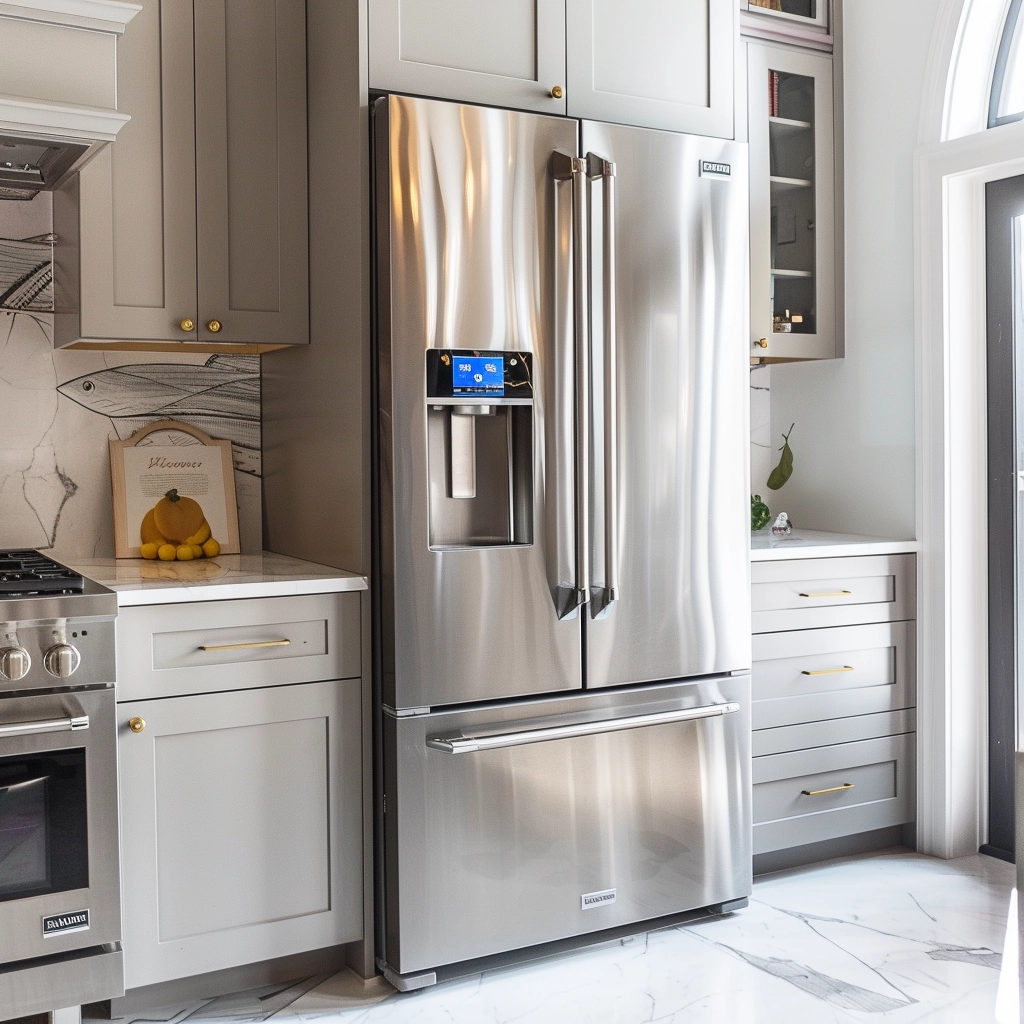In this comprehensive guide, we delve into the fascinating world of refrigerator weights. From the feather-light mini-fridges to the heavy-duty French-door giants, we uncover the secrets behind the numbers. Let’s embark on a journey to demystify the weighty question: How much does a refrigerator truly weigh?
How Much Does a Refrigerator Weigh?
If you’ve ever wondered about the weight of a refrigerator, you’re not alone. The weight of refrigerators varies significantly based on factors such as type, brand, and size. Let’s break down the numbers.

Average Weights by Refrigerator Type:
| Refrigerator Type | Average Weight (lbs) | Average Weight (kg) | Average Capacity (cu.ft.) | Pounds per Cubic Foot of Capacity |
|---|---|---|---|---|
| French Door | 317 | 144 | – | 13 |
| Side-by-Side | 285 | 129 | – | 12 |
| Top Freezer | 166 | 75 | – | 10 |
| Bottom Freezer | 215 | 98 | – | 11 |
| Mini Fridge | 60 | 27 | – | 13 |
French Door refrigerators lead the pack in terms of weight, with an average of 317 pounds. On the other end of the spectrum, mini fridges are the lightest, tipping the scales at just 60 pounds on average.
Calculating Weight by Refrigerator Type

Mini Refrigerators: These pint-sized champs weigh in at 30 to 50 pounds. Perfect for dorms and small spaces, they’re lightweight and affordable.
Two-door Top Freezer: Ranging from 160 to 260 pounds, these compact wonders strike a balance between space and weight.
Two-door Bottom Freezer: Slightly heavier at up to 250 pounds, these models offer a unique configuration for those seeking versatility.
Side-by-Side: Heavy-duty contenders weighing between 240 and 350 pounds, offering ample storage for large households.
French-door: The heavyweight champion, tipping the scales at up to 360 pounds, these multi-door marvels redefine kitchen luxury.
Factors Influencing Refrigerator Weight
Features and Accessories: Ice makers, water dispensers, and additional gizmos can bulk up the weight.
Age: Older models carry the burden of outdated components, resulting in heavier loads.
Model: Each refrigerator type comes with its own weight class, with French-door models leading the pack.
Importance of Knowing Refrigerator Weight

Dead Load: Consider the weight impact on flooring and structural support to prevent damage.
Live Load: Factor in the weight of occupants and furniture to evenly distribute the load.
Floor Condition: Assess the condition of your floor to avoid potential damage from heavy appliances.
Tips for Moving a Refrigerator

Moving a refrigerator can be a daunting task, but with the right approach, it’s manageable. Here are some practical tips to make the process smoother:
- Empty the Refrigerator: Before moving the refrigerator, remove all items from inside to lighten the load and prevent spills.
- Defrost and Disconnect: If your refrigerator has a freezer, defrost it before moving. Disconnect any water or power sources according to the manufacturer’s instructions.
- Secure Doors and Cords: Use moving tape to secure the doors shut and prevent cords and tubes from dragging.
- Plan Ahead: Measure doorways and pathways to ensure the refrigerator can fit through. Create a moving plan and enlist help if needed.
- Use an Appliance Dolly: Invest in or rent an appliance dolly with straps to safely transport the refrigerator.
- Move Carefully: Tilt the refrigerator onto the dolly, ensuring the majority of the weight is supported. Walk backward when moving to maintain visibility.
Choosing the Right Refrigerator Size
Selecting the appropriate refrigerator size is crucial to avoid unnecessary weight and expenses. Consider the following tips when choosing a refrigerator:
- Measure Spaces: Take accurate measurements of doorways, kitchen cutouts, and available space to ensure the refrigerator fits.
- Consider Your Needs: Assess your household’s size and food storage requirements to determine the ideal capacity.
- Think About Efficiency: Smaller refrigerators are often more energy-efficient and cost-effective in the long run.
- Explore Options: Don’t feel pressured to opt for the largest refrigerator available. Consider alternative storage solutions such as mini fridges or detached freezers.
Also read: Best Pruning Shears
Final Thoughts
Selecting the right refrigerator goes beyond aesthetics and features. By understanding the weight dynamics, you can make an informed decision that safeguards your home and enhances your lifestyle.
Questions and Answers:
- Q: How much does a French Door refrigerator typically weigh? A: On average, a French Door refrigerator weighs around 317 pounds.
- Q: What is the lightest type of refrigerator? A: Mini fridges are the lightest type of refrigerator, weighing approximately 60 pounds on average.
- Q: What factors impact the weight of a refrigerator? A: Factors such as type, size, construction materials, additional features, and brand all contribute to the weight of a refrigerator.
- Q: How should I prepare my refrigerator for moving? A: Before moving, empty the refrigerator, defrost if necessary, secure doors and cords, and plan the moving process carefully.
- Q: What are some benefits of choosing a smaller refrigerator? A: Smaller refrigerators are often more energy-efficient, cost-effective, and suitable for households with fewer occupants.
- Q: Can I move a refrigerator on my own? A: It’s recommended to enlist help when moving a refrigerator to ensure safety and prevent damage to the appliance or surroundings.
- Q: Are there alternative storage options to traditional refrigerators? A: Yes, mini fridges and detached freezers are alternative options that offer smaller storage capacities and lower weights.
- Q: What should I consider when choosing the right refrigerator size? A: Consider factors such as available space, household size, efficiency, and storage needs when selecting the right refrigerator size.
- Q: How can I ensure the refrigerator fits through doorways and pathways? A: Take accurate measurements of doorways and pathways and plan the moving route accordingly to avoid any obstacles.
- Q: Why is it important to secure doors and cords before moving a refrigerator? A: Securing doors prevents them from swinging open during transport, while securing cords prevents damage and tripping hazards.







